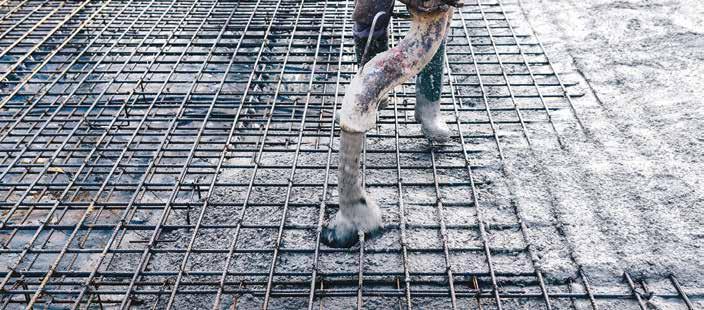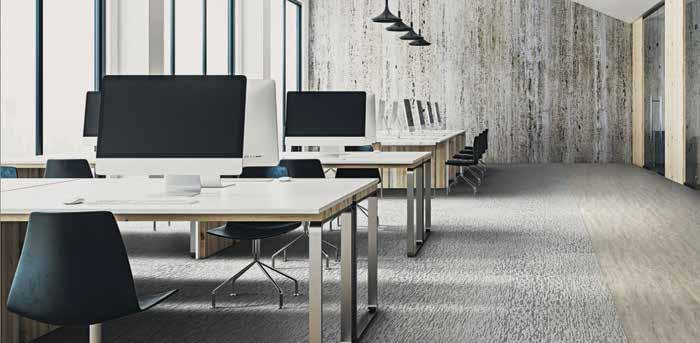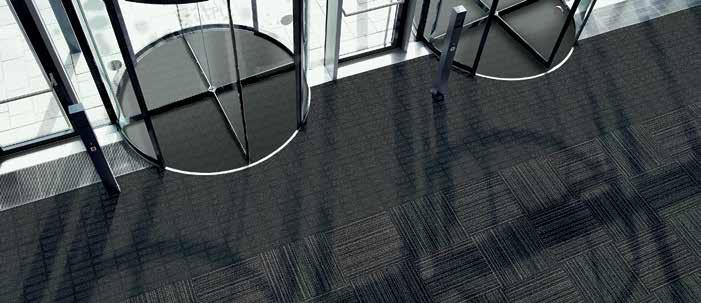
3 minute read
Milliken: The only moisture mitigation solution you’ll ever need
The simplest (and most cost-effective) way to mitigate the risk of moisture problems on your next project is through your choice of flooring.
Moisture causes millions of dollars of damage in the construction industry, and a lot of the time it’s flooring that gets hit the hardest. As a result, many flooring installers are building moisture mitigation products and processes into their installation quotes as standard.
However, many of the most commonly-used moisture mitigation products don’t actually solve or prevent moisture problems from occurring – they simply isolate the moisture issues from the flooring, covering it up so it’s out of sight and out of mind.
What causes moisture problems?
The majority of moisture on a construction site or in a building exists in vapour form; in this state it’s harmless and doesn’t cause any damage. In fact, you’re unlikely to experience any moisture problems at all, unless the vapour condenses into liquid water.
The concrete subfloor releases a lot of moisture vapour – either from drying concrete on a new construction site, or due to fluctuations in the water table if the building is on or belowgrade. However, many flooring products are impermeable, or have an impermeable backing, meaning that the moisture vapour rises up through the concrete slab, and gets trapped beneath the flooring.
With the slightest change in temperature, this water vapour condenses into liquid water, and causes a wealth of problems, including mould growth, adhesive breakdown, or total flooring failure.
Do common moisture mitigation products solve the problem?
There are a whole range of moisture mitigation products available to help manage high-moisture situations: two-part epoxies, floor sealants, and adhesive-free installations are just a few of the most common options available.
However, these products all have one thing in common: they don’t prevent liquid water from forming. This means they don’t deal with the root cause of the moisture problem, but rather manage and minimize the problems it causes.
Fortunately, there is an alternative option – one that deals with the root cause of moisture problems, rather than simply acting as a bandage to cover-up the issue.
The simplest and most effective moisture mitigation solution

Instead of investing hours into meticulous floor preparation, and thousands of dollars in mois-ture mitigation products, there’s a much simpler way to protect your building against moisture problems. The simplest (and most cost-effective) way to mitigate the risk of moisture problems on your next project is through your choice of flooring.
The majority of commercial flooring types are impermeable,and trap moisture vapour underneath until it condenses into liquid water which causes adhesive breakdown, mould growth, or simply ruins your carefully-selected flooring product. But if moisture vapour was simply able to evaporate away from the concrete subfloor instead of being trapped, there would be no risk of liquid water forming, and therefore no risk of moisture problems.

Instead of selecting impermeable flooring, you can prevent moisture problems by simply selecting a different type of flooring – one that is breathable and allows moisture vapour to pass through. Milliken’s unique open-cell cushion backing does just that. The open-cell cushion “wicks” moisture vapour out of the subfloor, preventing it from condensing into liquid water.
So when you’re comparing moisture mitigation solutions on your next project, remember to consider whether the simplest solution will be the best for you and your clients: mitigating moisture problems could be as easy as selecting the right type of flooring. n
OBEX™ ENTRANCE FLOORING
A comprehensive modular entry solution designed as a three-zone barier system reduces safety hazards and keeps outside elements from damaging your overall flooring investment all while enhancing the visual appeal of your space.
millikenfloors.com | mike.pajic@milliken.com | 604.808.6614










